
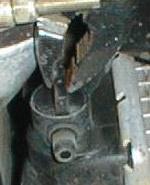

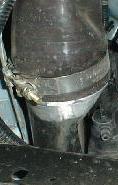

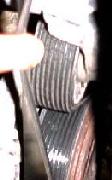
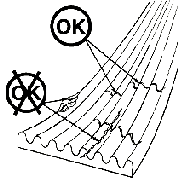
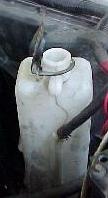
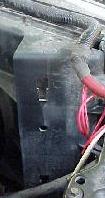

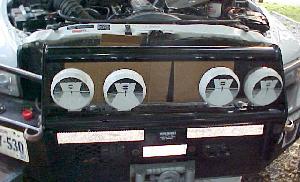
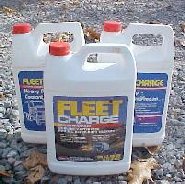
From Steve St.Laurent :
Here’s how I did mine and I got approximately 5.5 gallons into the system, first I opened the petcock on the radiator (turn it, then pull on it a little, turn, pull, turn, pull – until it starts draining), that will drain the fluid out of the overflow bottle, once the overflow bottle is empty then take the radiator cap off. Now pull the hose connector off the top of the engine and remove the thermostat. Once it stops draining, pour distilled water into both the inside and outside holes in the thermostat hole until you see clear water flowing out of the radiator. Now pour in straight 100% coolant into those same two holes until you see coolant running out the radiator. Close the radiator petcock. Some of the water and some of the 100% coolant will be trapped in the system – should be around 50/50. Now pour in either pre-mix or mix 50% coolant with 50% distilled water in through the thermostat hole until the system is as full as you can get it. Then put the new thermostat in and the top radiator hose connector. Finish filling the radiator with the mix, close the radiator cap and then fill the overflow bottle. Run the truck until it’s warmed up (so the thermostat opens) and then check the overflow bottle again.
Using this method I was able to get in approximately 5.5 gallons (actually poured in more than that but some of it pours out) and I didn’t have any problems with trapped air because I was backfilling the system from the engine to the radiator. You want to use distilled water only so you don’t get mineral deposits in your coolant system.
Excerpts from Cummins Service Bulletin 3666132-01:
Storage Stability
Liquid SCA/ESA typically has a shelf life of at least 2 years from the time of manufacture when stored at temperatures ranging from -7° to 55°C [19° to 131°F].
Note: Solid material, liquid turbidity, or layering at the top of the liquid is allowed if it will dissolve and disperse by stirring the solution and warming it to a temperature between 2° to 67°C [36° to 153°F].
RECOMMENDED MAINTENANCE PRACTICES FOR COOLING SYSTEMS OF PARENT BORE (NONLINED) ENGINES
Note:L See also Operation and Maintenance Manual, B Series Engines, Bulletin No. 3810205.
The B Series engine normally does not require SCA because the engine normally does not experience cast-iron cavitation corrosion. The Cummins B Series engine has not shown any tendency toward cast-iron cavitation corrosion. Also, the B Series engine does not have an integral coolant filter.
Therefore, the B Series engine coolant recommendation is to use low-silicate antifreeze meeting ASTM D4985 specifications and to drain and replace it every 320,000 km [200,000 mi], 2 years, or 6000 hours of operation (whichever occurred first).
Use of fully formulated coolant in this engine is acceptable but not
required. Cooling systems perform best with distilled or deionized water mixed 50/50 with antifreeze.
The primary purpose of antifreeze is to lower the freezing point of the coolant. Additional performance characteristics of coolants that are affected by the use of antifreeze include boiling point and vapor pressure. Antifreeze decreases vapor pressure, which is very beneficial to the reduction of cavitation.
A 50/50 mixture of antifreeze and water provides optimum boiling and freezing point protection for engines. An antifreeze concentration in excess of 60 percent must never be used since it increases the possibility of forming cooling system gel, which results as silicates precipitate out of solution. However, an antifreeze concentration less than 40 percent increases the possibility of coolant freezing and liner pitting. Therefore, Cummins recommends an antifreeze concentration range of 40 to 60 percent.
ATTACHMENT 6 – PROPERTIES OF VARIOUS COOLANT MIXTURES (GLYCOL MIXTURES)
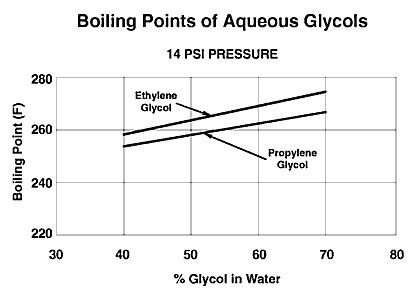
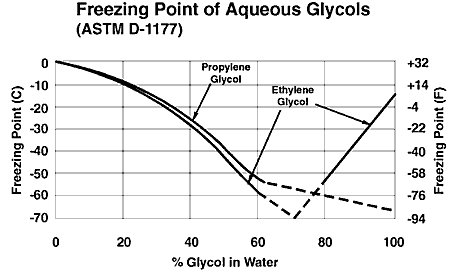
COOLANT ADDITIVES AND THEIR FUNCTIONS
| Additives | Function |
|---|---|
| Borate and Phosphate | Maintain proper pH of coolant and provide some corrosion protection |
| Nitrate, Silicate, MBT, TT, and Some Organic Acids | Provide corrosion protection for various metals |
| Nitrites | Provide cast-iron cavitation-corrosion protection |
| Polymers | Provide scale and deposit formation protection |
| Surfactants | Provide some antifouling protection against oil and dirt contaminants in the coolant |
| Defoamers | Prevent coolant from forming a stable foam (that can cause pump cavitation and overheating) |
| Molybdate | Provide cast-iron cavitation and aluminum corrosion. |

